Transdanube.Pearls Transdanube.Pearls - Network for Sustainable Mobility along the Danube
Travel the Danube sustainably!
Travelling along the Danube in 22 days – sustainably!
An international expert team, consisting of video, mobility and tourism experts travelled the 2.860 km long route along the Danube by using only sustainable means of transport, such as busses, trains, ships and bikes. They encompassed 9 countries and visited more than 15 regions and cities in 22 days – always with sustainable means of transport. The journey aimed at demonstrating existing possibilities to travel the Danube region without private car, to contribute to the project Transdanube.Pearls by providing valuable assessment on the current situation in the regions and to foster the concept of sustainable mobility in tourism along the Danube.
The first part of the journey from the source of the Danube in Donaueschingen, Germany to Budapest took place in July 2017. The second part of the tour from Budapest to the Danube Delta was successfully completed in September 2017. On behalf of the project, Dejan Veselinov (tourism expert), Andreas Friedwagner, Dušan Čavić and Dušan Saponja (video team) travelled along the Danube and evaluated possibilities to travel sustainably along the Danube.
Besides the visits of touristic points of interest and the assessment of available sustainable means of transport, the expert team had fruitful meetings and discussions with stakeholders from the tourism and mobility sector in those regions.
The knowledge gained from the tour will provide valuable inputs about the relevant touristic points of interest, existing mobility services and the accessibility of information on sustainable means of transport to travel to, between and within the Pearls. The gained knowledge will help to tackle this issues, to elaborate solutions and to improve sustainable travel along the Danube.
Aside from those important insights that will contribute to successful project implementation, the team also took pictures and videos of regions and impressive touristic sites, that highlight the cultural richness and beauty of nature along the Danube.
ITINERARY AND IMPRESSIONS OF THE TOUR:
Donaueschingen/Ulm – Passau – Linz – Enns – Wien
The tour started in Ulm and Neu-Ulm, where the team had the rare chance to visit the traditional event “Fischerstechen” on the Danube that takes place every 4 years. Together with thousands of visitors, the guests enjoyed the spectacle and the sensational fights in good weather.
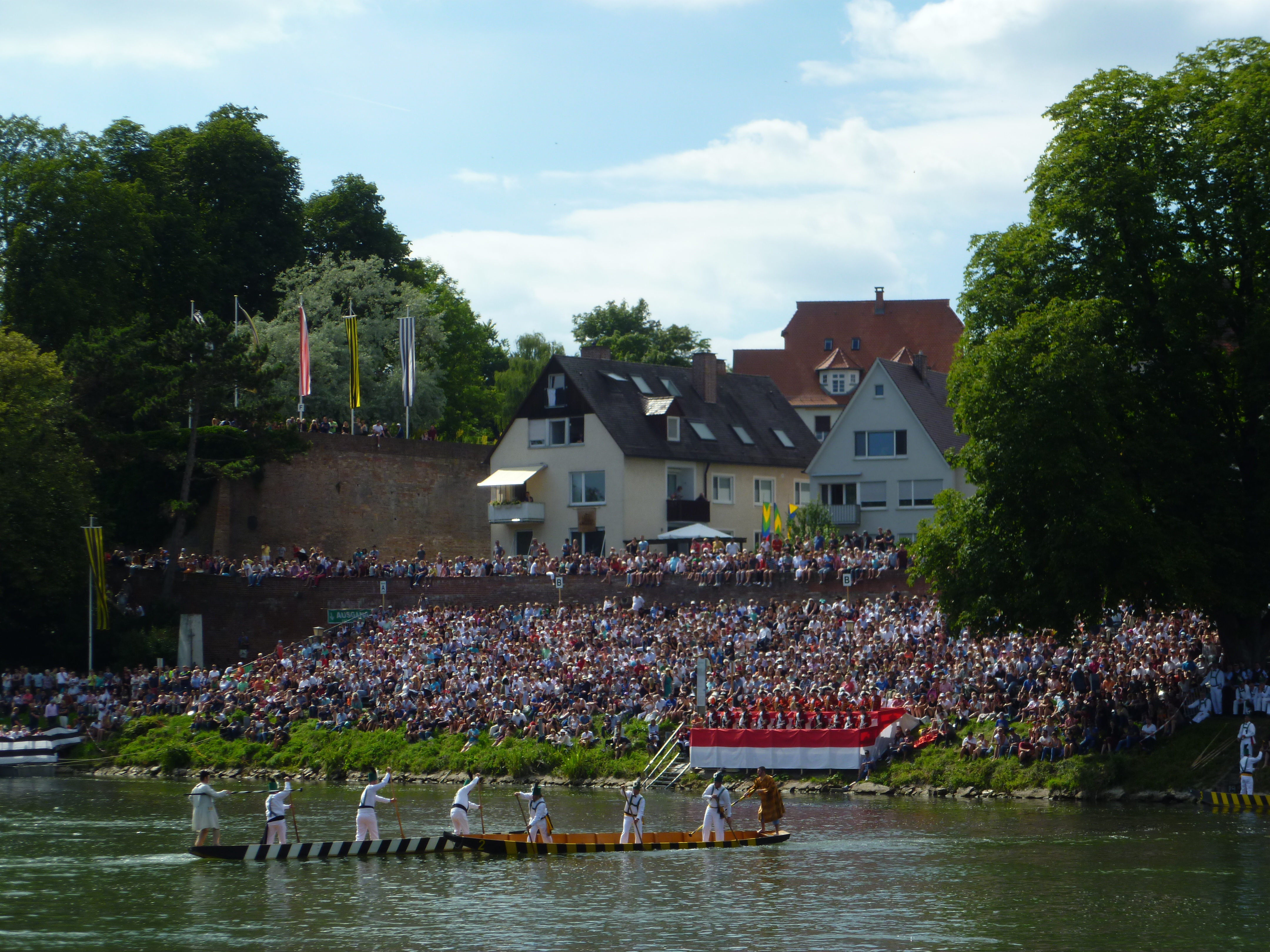
(Fischerstechen on the Danube in Ulm, Germany)
By taking the train to Donaueschingen, the team arrived at the source of the Danube – the starting point labelling the length of the Danube with 2.879 km.
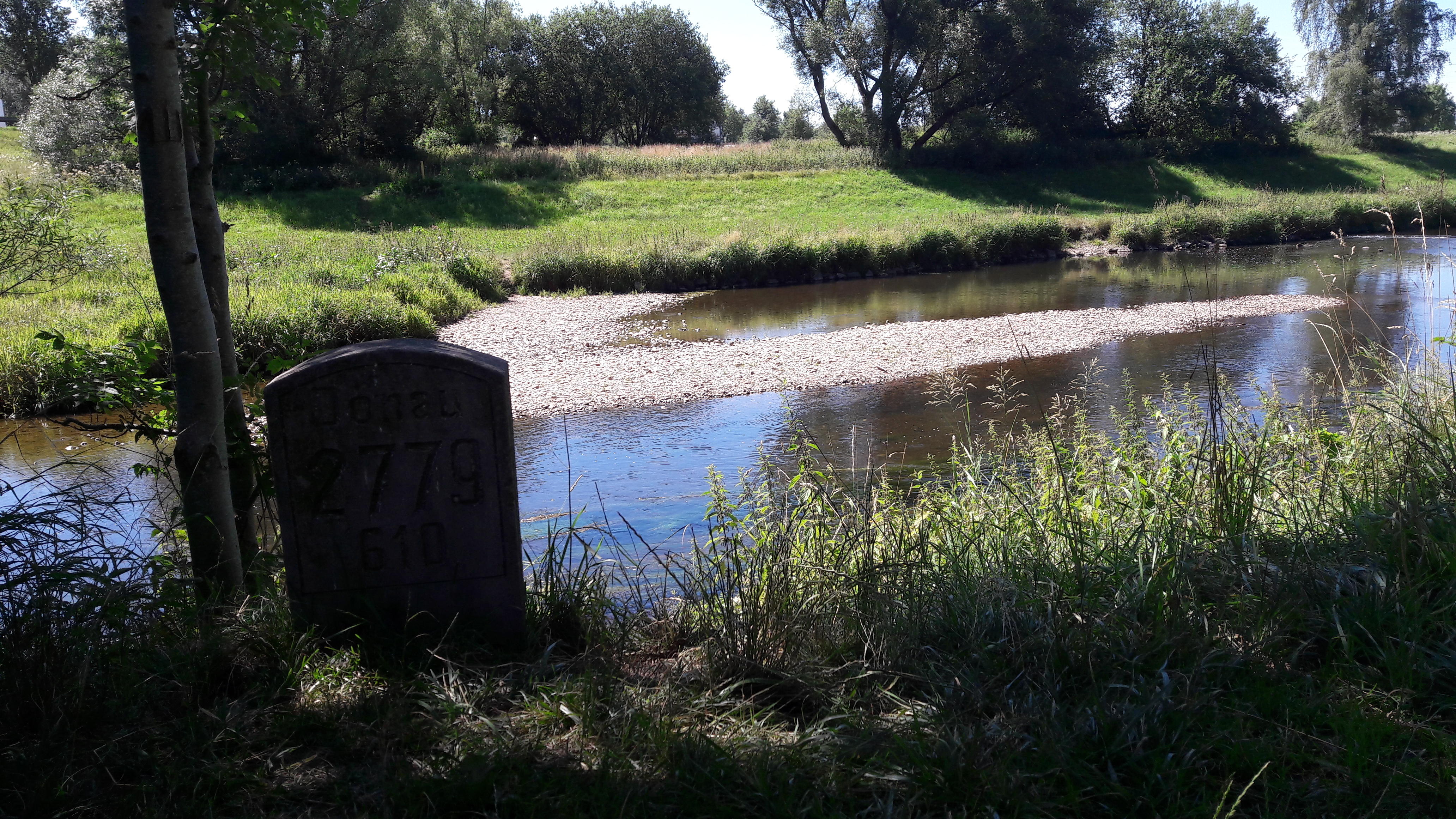
(Beginning of the Danube - 2779 km, Donaueschingen, Germany)
Before departing for Passau, the mobility and expert team met representatives from the mobility and tourism sector and discussed further necessary and desirable improvements in the field of cycling, bike rental and tourism in Ulm and Neu-Ulm.
After a short stopover in Passau, they continued their journey by ship to Linz, where the team hiked up to the Schlögener Schlinge and and enjoyed the fascinating view of the Danube.
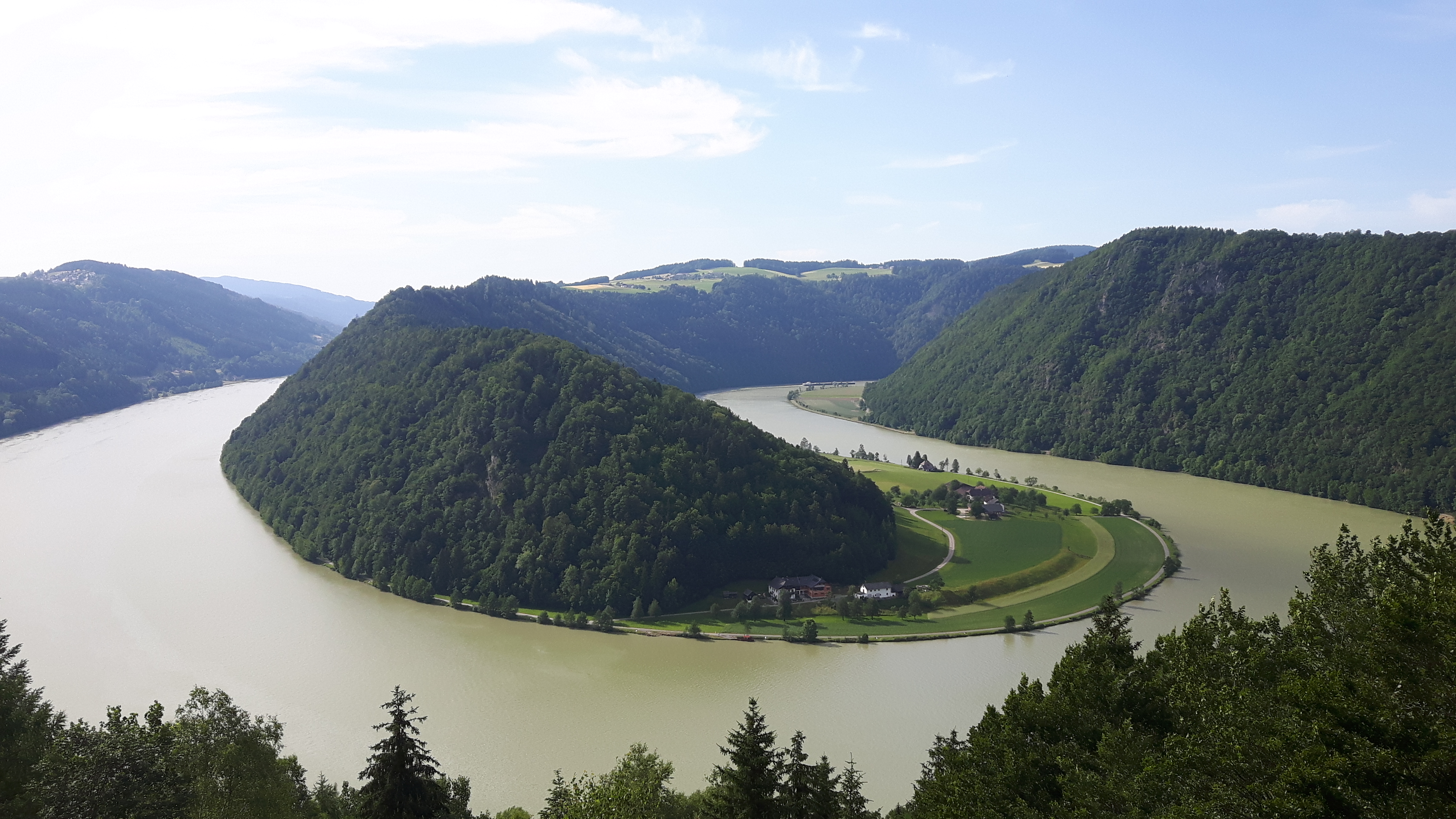
(Schlögener Schlinge, Austria)
During a bike tour along the Danube in Linz, they passed touristic hotspots such as the Mural Harbor (an outdoor graffiti gallery in the harbor). While enjoying dinner with the managing director of the Upper Austrian Danube region and a representative of the Austrian federal railway company, they discussed existing mobility and tourism offers in the region and further potential improvements.
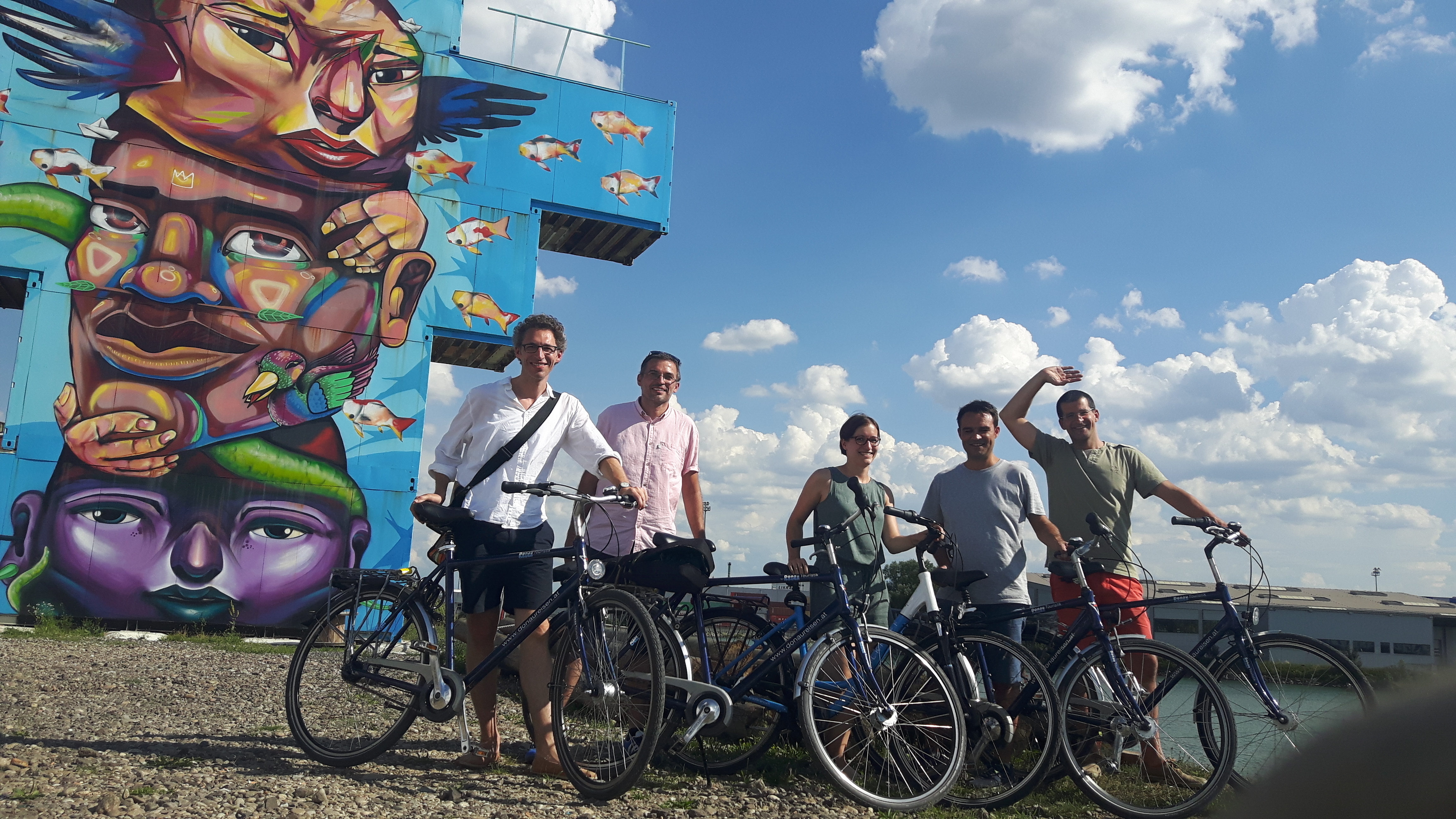
(Mural Harbor in Linz, Austria)
Continuing by train from Linz, the expert team visited Enns, the oldest city in Austria before heading to Melk where they joined a guided tour of the famous monastery. The adventurous journey to Vienna required changing the train five times and taking the ship.

(Boat ride on the Danube, Austria)
Vienna was the entrance gate to lake Neusiedl, where they cycled the five-star bike route and observed the fantastic flora and fauna of the national park.
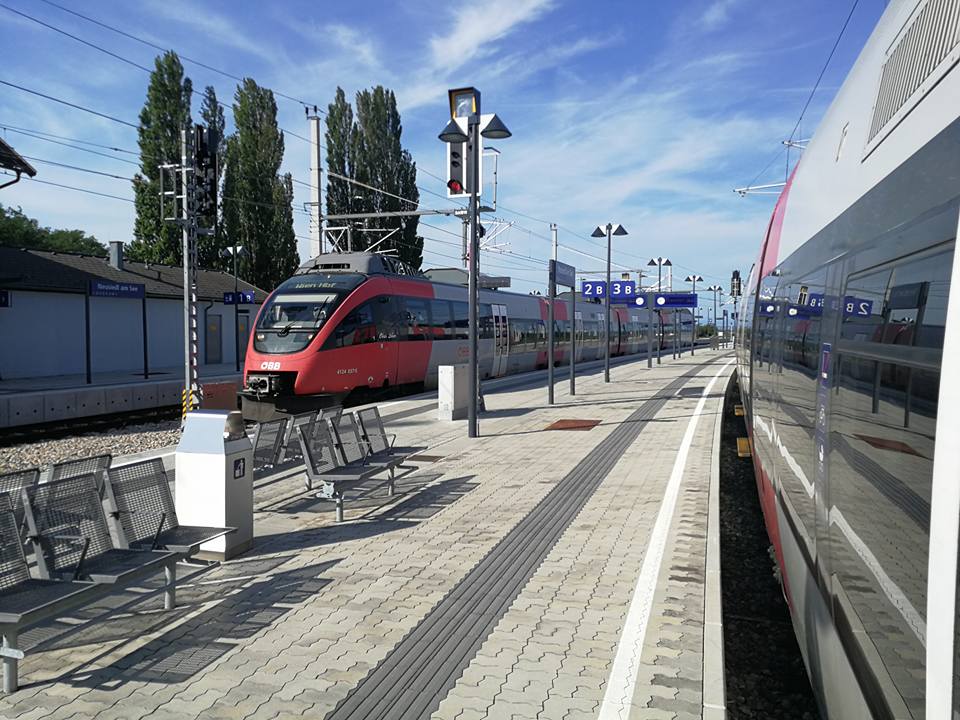
(Train station in lake Neusiedl, Austria)

(National Park Neusiedler See – Seewinkel, Austria)
Bratislava – Szigetköz/Mosonmagyaróvár - Pomurje
Entering the middle part of the Danube, the team visited the new cycle path in Bratislava on the old bridge and the Freedom bridge that connects Slovak Republic and Austria. The cycle infrastructure improved remarkably in this region in the past years.
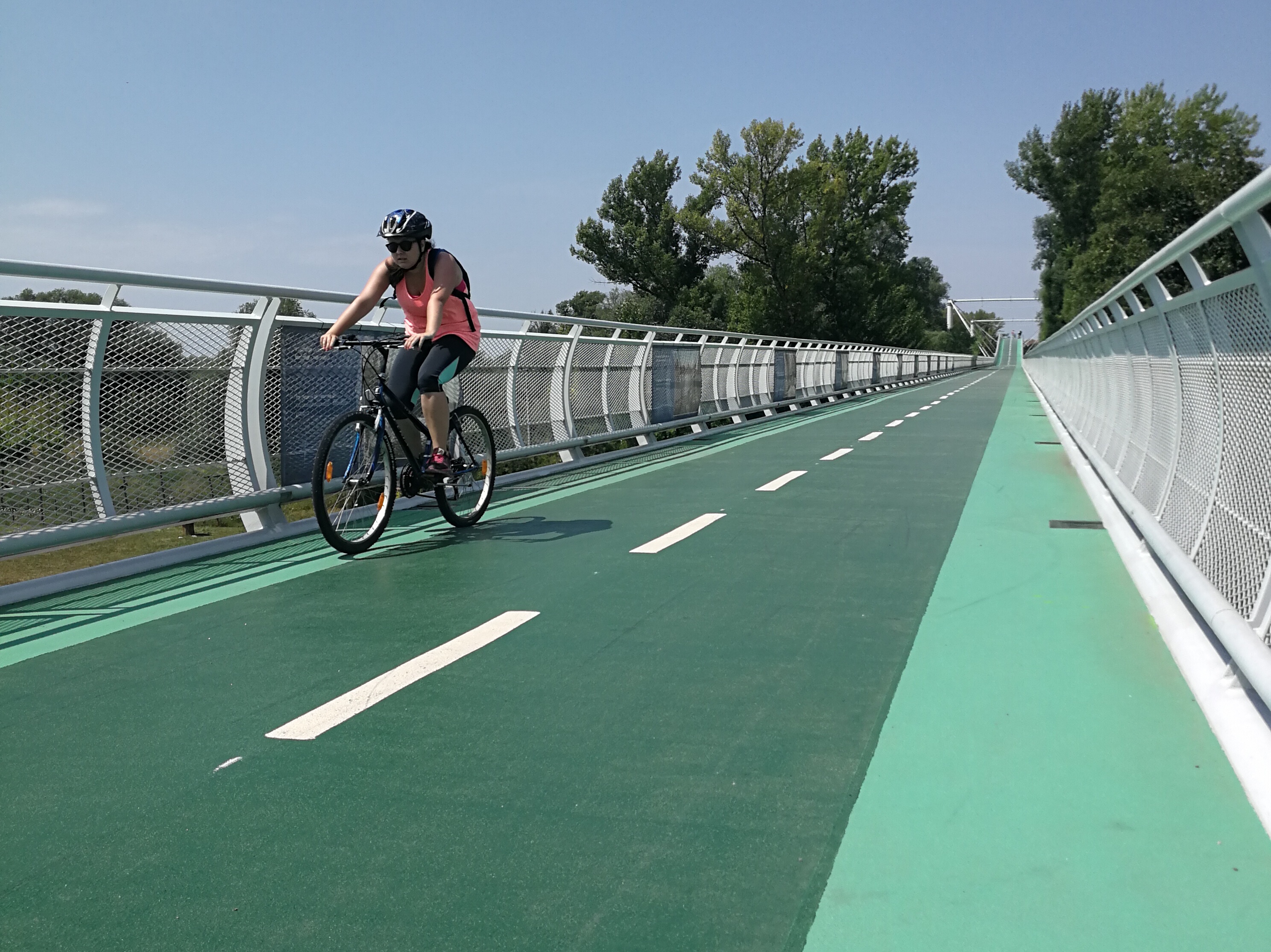
(Freedom Cycling Bridge in Bratislava, Slovakia)
During their stopover in Bratislava, they met Avram Iancu who is swimming from Donaueschingen to the Delta – of course, sustainably.
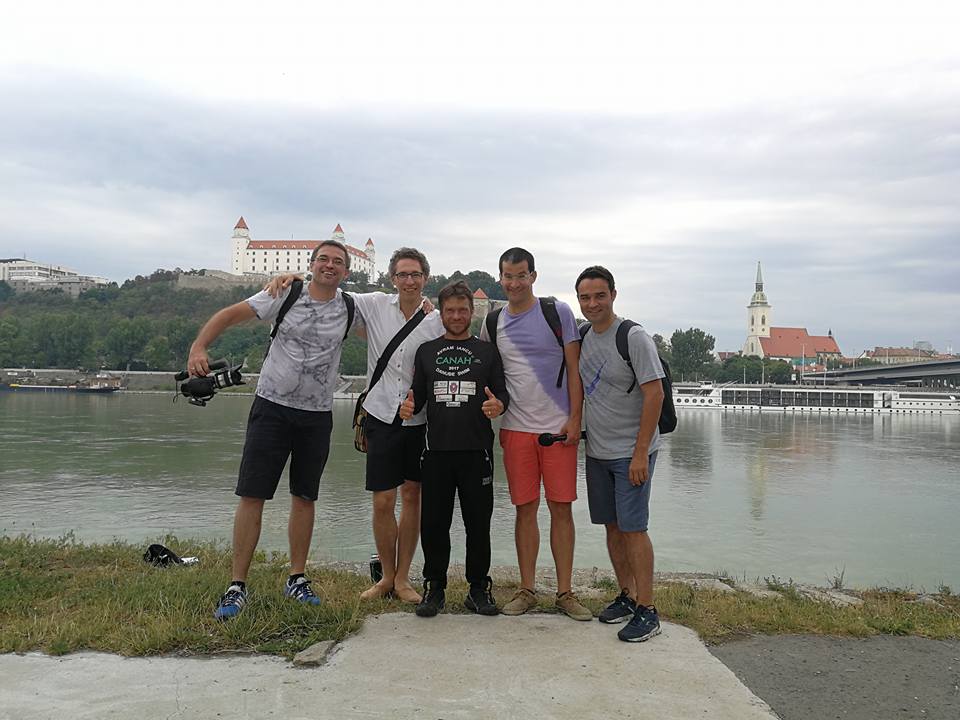
(The expert team and Avram Iancu, from left to right: Dušan Saponja, Andreas Friedwagner, Avram Iancu, Dušan Čavić, Dejan Veselinov)
On their way to Hungary, the team cycled down the EuroVelo 6 from Bratislava to Cunovo where the Canoe Slalom Junior World Championship took place. Zoltan from Pistráng Kör Egyesület usually offers guided tours with bicycles and canoes and thus, guaranteed the access to bikes for the expert team.
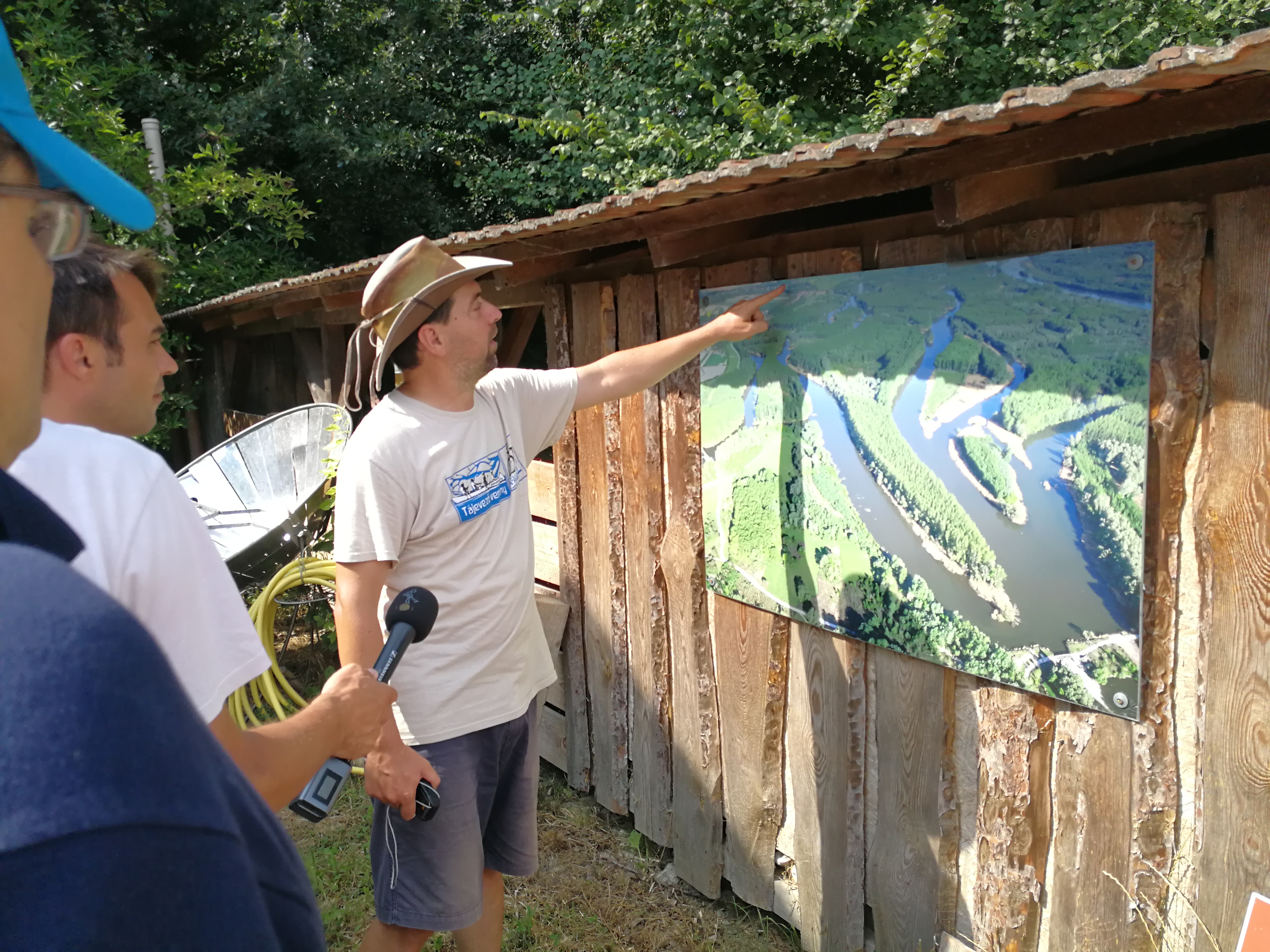
(The Amazonian Danube in Szigetköz, Hungary)
Together, they explored the hidden treasures of 850 km long labyrinth of the Amazonian Danube in Szigetköz, before continuing by boat to Mosonmagyaróvár, where they canoed along the Leitha river to the city center and explored its touristic hotspots by bike.
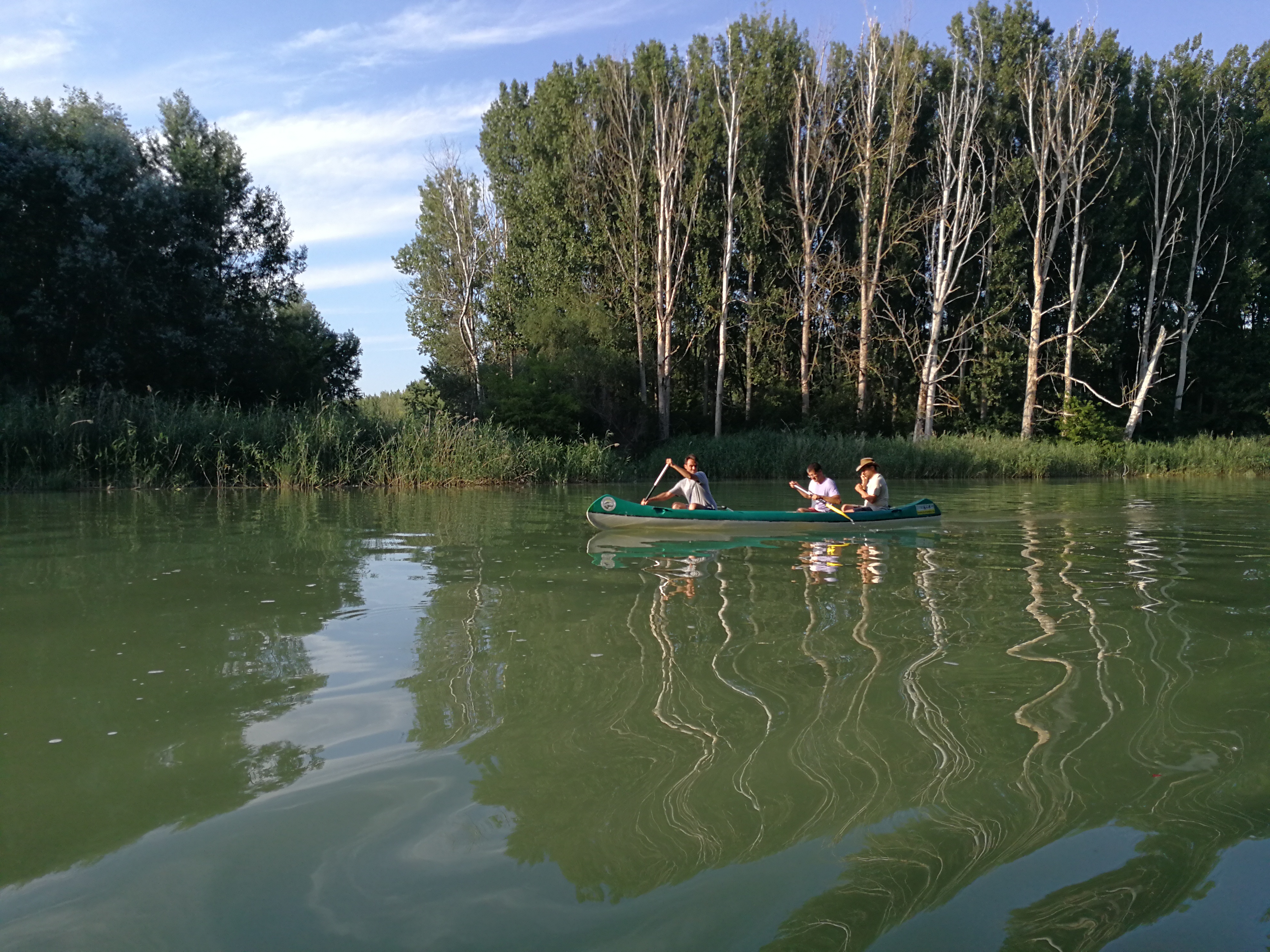
(Canoeing in Szigetköz, Hungary)
The last section of the first part of the tour is Pomurje in Slovenia which is linked to the Danube by its tributaries Mur/Mura and Drau/Drava. After taking the train to Murska Sobota and the bus to Moravske Toplice, the team arrived in the popular wellness region. Local initiatives are doing a great job in preserving the cultural heritage, such as the watermill at Otok Ljubezni on the Mura river. A meeting with regional stakeholders provided the chance to discuss the next steps on the way to position Pomurje region as future Transdanube.Pearl.

(The watermill Otok Ljubezni on the Mura river in Slovenia)
Before continuing to travel sustainably along the Lower Danube, the team went back to Budapest and took a break.
Budapest – Mohács/Pécs – Vukovar – Donji Milanovac/Kladovo
Starting from the ending point of the first part of the tour, Budapest, the team travelled by bus to Mohács, Hungary where they experienced the growing cycling culture. Together with the increasing number of cycling tourists, a lot of local people use the bicycle for their daily trips along the EuroVelo 6 and 13. The cycling infrastructure of both cycle paths has been improved a lot in the last years. During their stay in Mohács, the team was accompanied by the Interreg reporter Nóra, deployed by the Interreg Volunteer Youth who had the chance to get to the know the project Transdanube.Pearls and the team.
Watch the video to see how Nóra experienced this journey and a interview with the responsible project manager about the aims of the project and possibilities to travel the Danube sustainable: Transdanube.Pearls - Interreg Reporter Project Interview
or read the blogpost about her experiences during the trip, the atmosphare and the integration of her personal impressions in the overall context of sustainable mobility: Jules Verne 2.0 - Around the Danube in 21 days
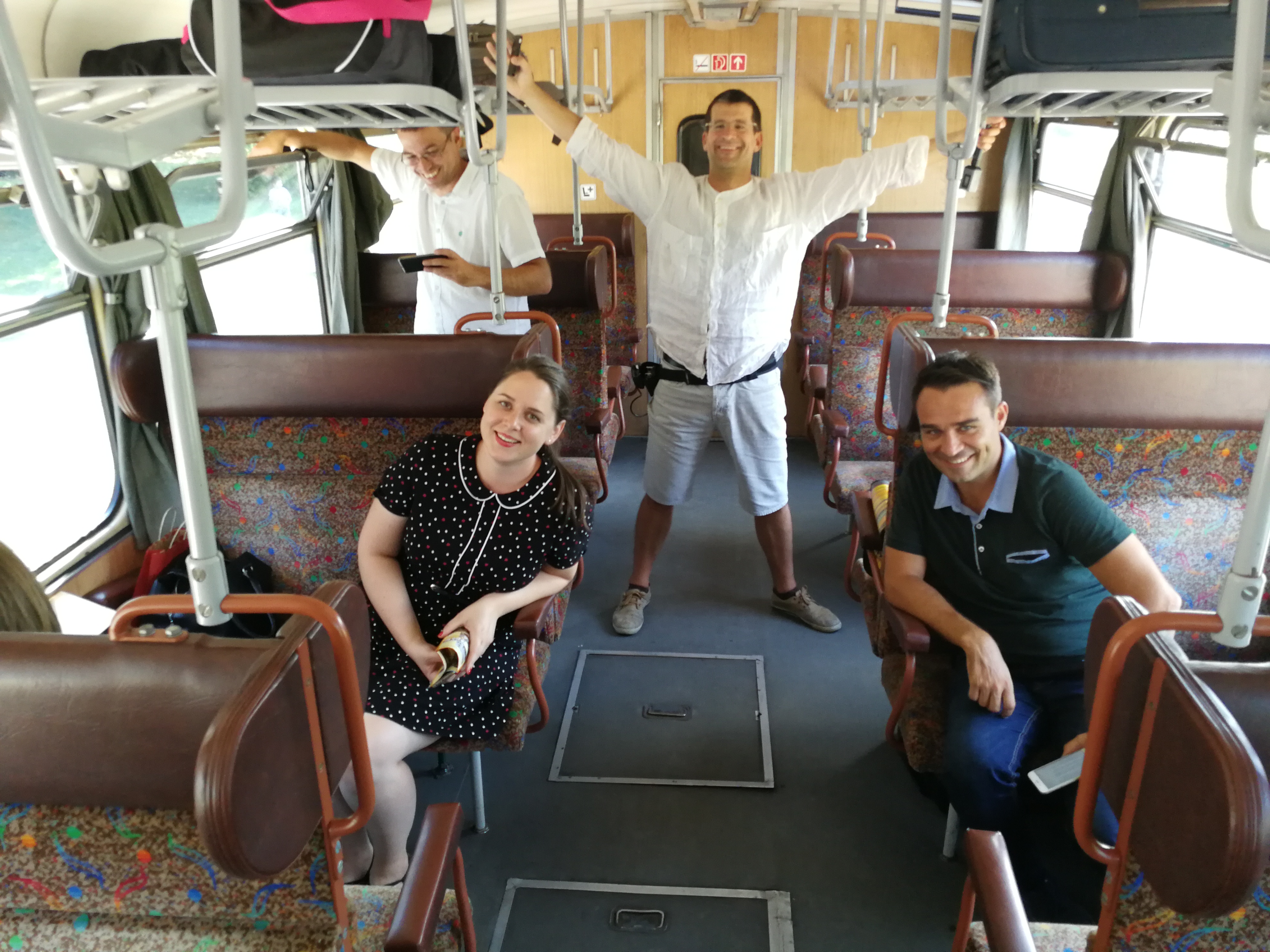
(The expert team and Nora, the Interreg Reporter on their way to Pécs, Hungary)
From Mohács, the team took the regional train to Pécs, the former European capital of culture 2010. The experts had a meeting in the new tourist info center and with the local bus company to discuss future options and possibilities. In the meantime, the video team explored the city’s beautiful historical sites, such as the Zsolnay cultural quarter.
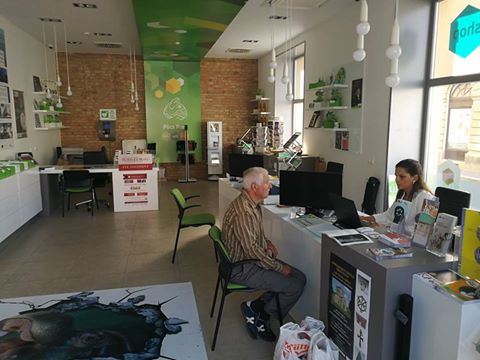
(The new tourist info center in Pécs, Hungary)
On their way to the next stop in Vukovar, Croatia, the team stopped by to visit the largest preserved intact wetlands in Europe in Kopački rit.
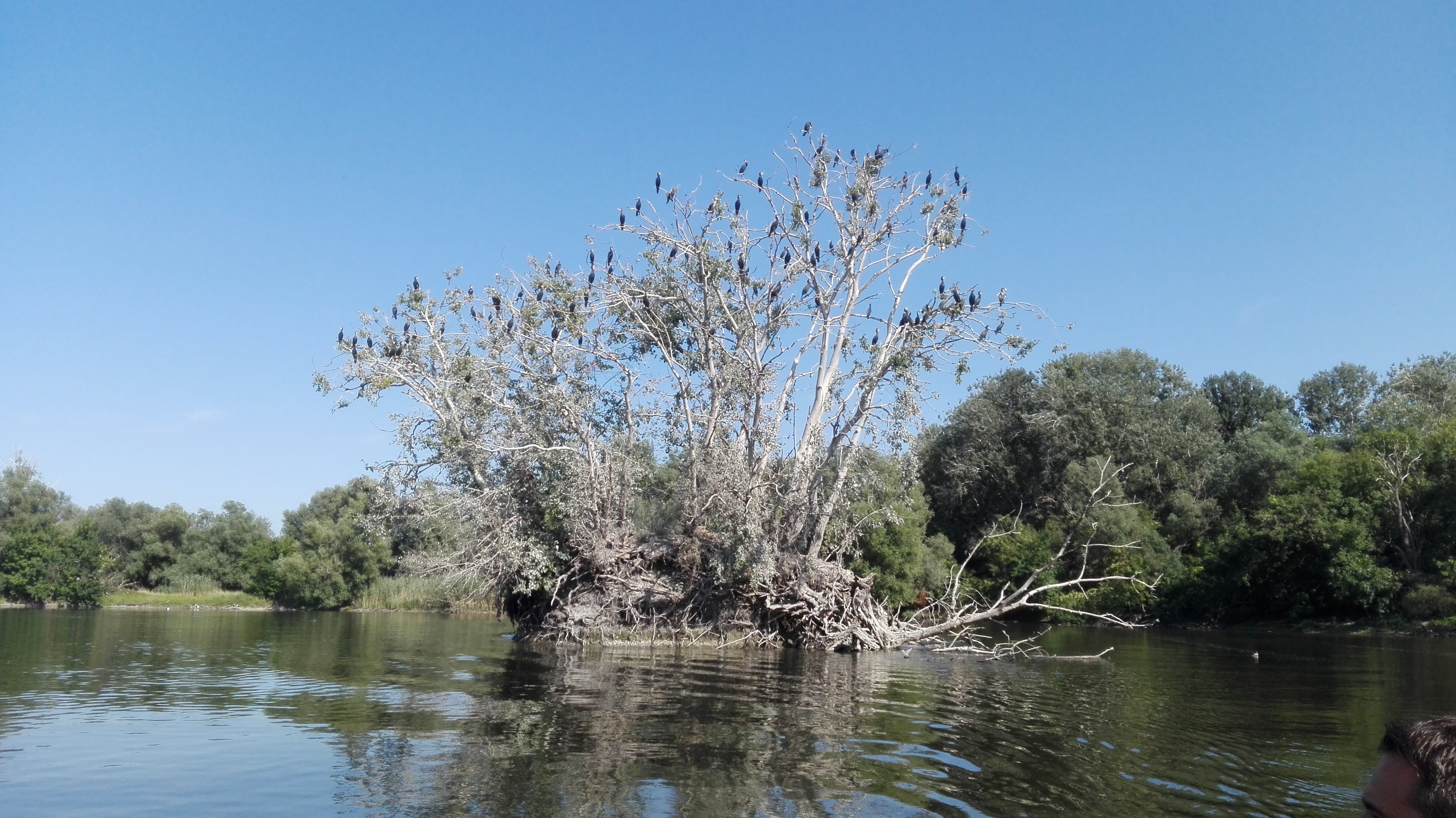
(Kopački rit Nature Park, Croatia)
In Vukovar they took a ride on the only existing E-waterboat on the Danube called “Bajadera” and thus, got a first impression of the city and the surroundings. Moreover, they attended the Vukovar Film Festival and met regional stakeholders responsible for the implementation of the future mobility center, before heading to Serbia.
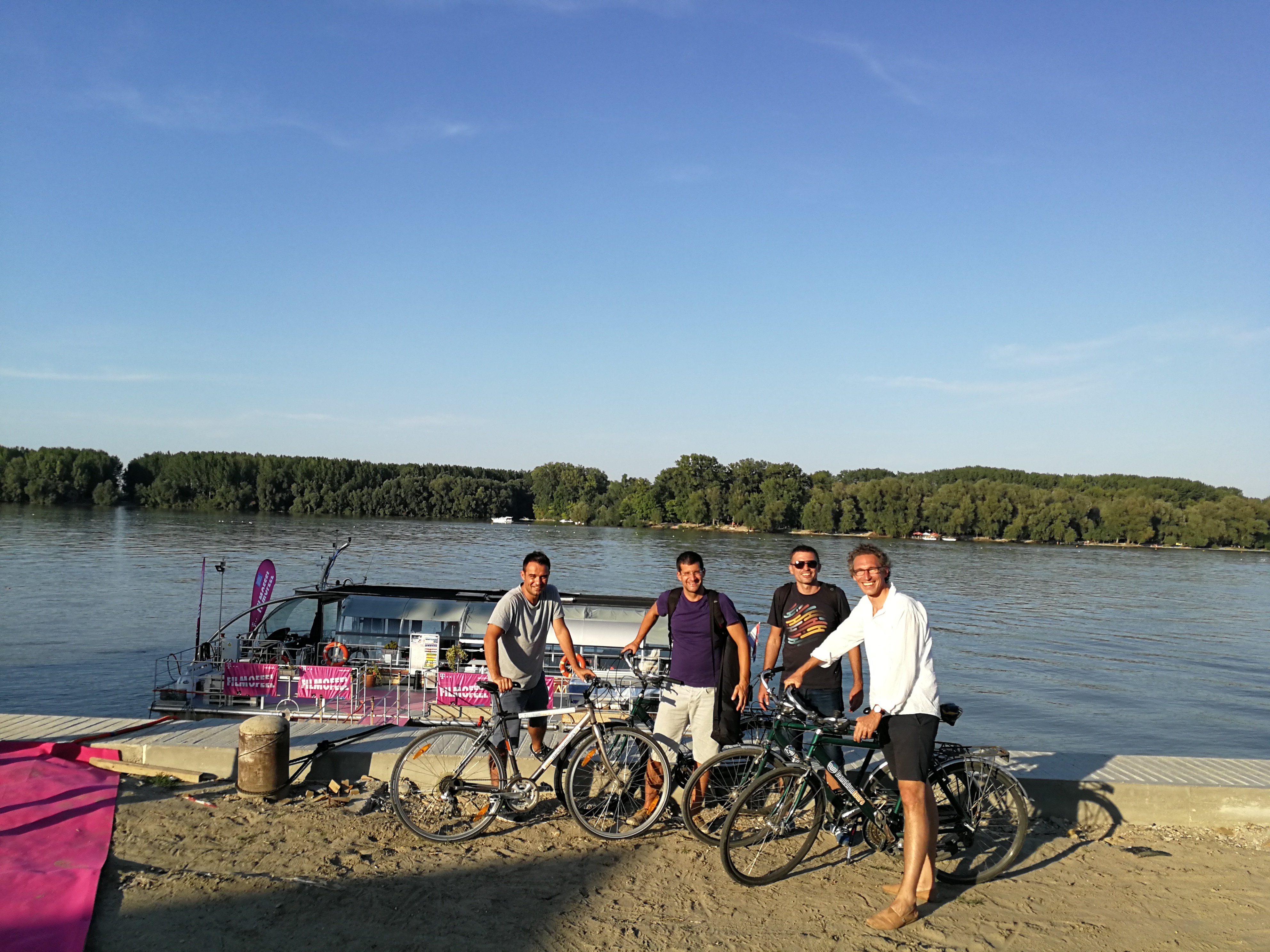
(Waterbus/E-boat “Bajadera” in Vukovar, Croatia)
By slowly approaching the Iron Gate and passing through Novi Sad and Belgrade in Serbia, brought the team to their next stops: Kladovo and Donji Milanovac.
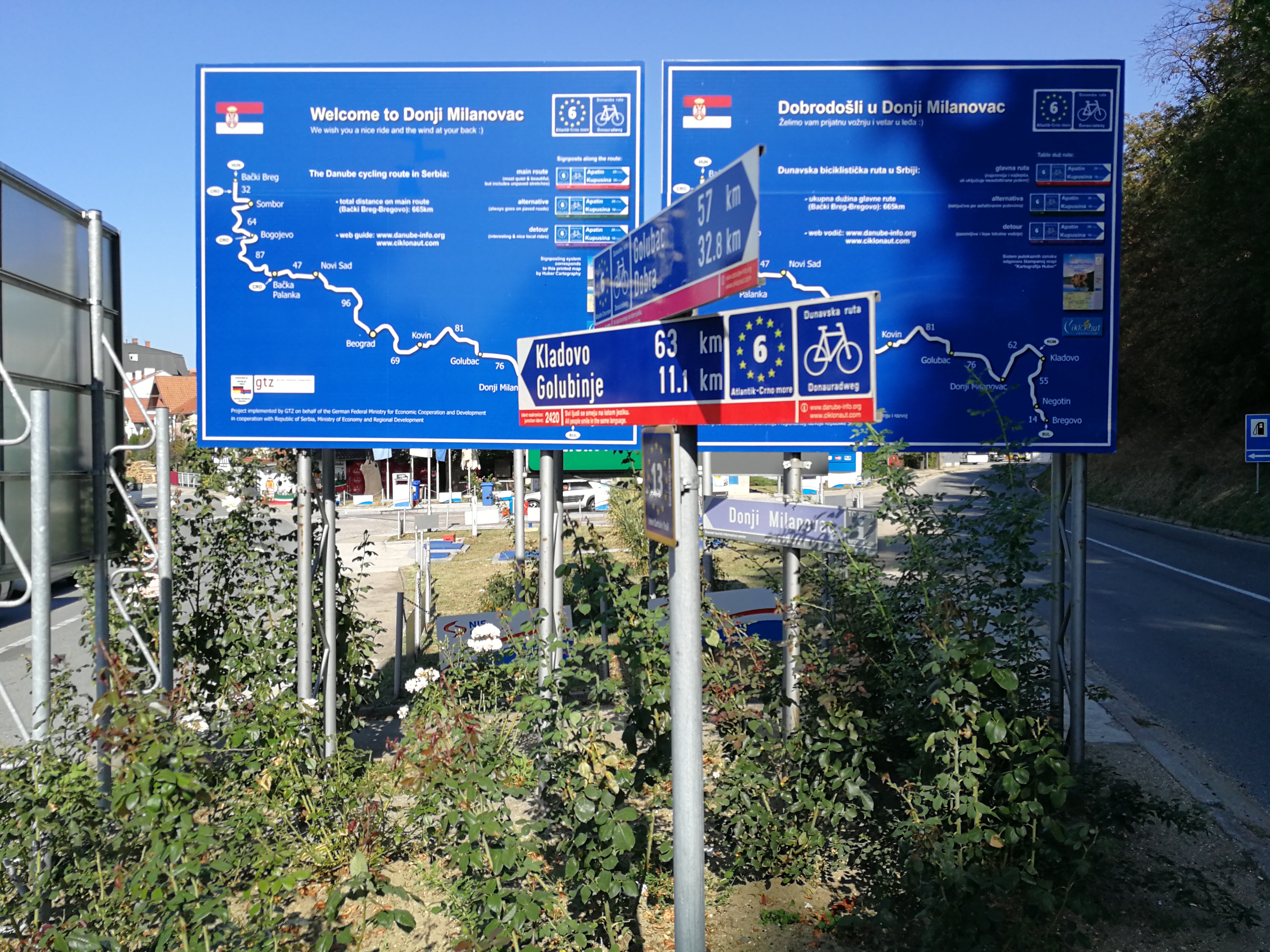
(Signs providing information on EuroVelo 6 routes in Donji Milanovac Serbia)
The team experienced the most famous Danube landmarks, Veliki and Mali Kazan Gorge and enjoyed a bike tour from the archaeological site Lepenski Vir to Donji Milanovac, where they had the opportunity to see the Danube Regatta.
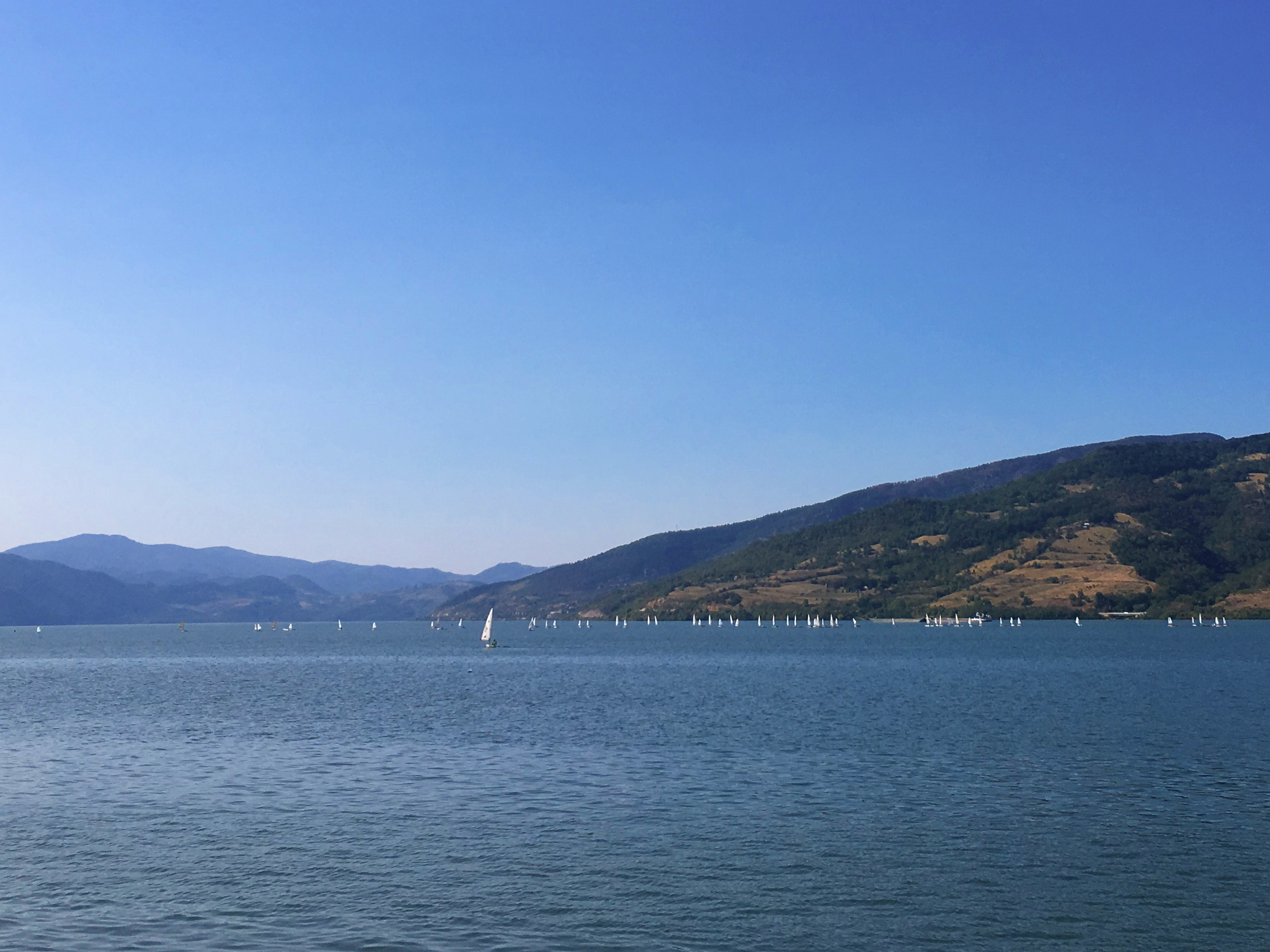
(Danube Regatta in Donji Milanovac, Serbia)
Dobreta Turnu Severin/Orsova – Vidin – Svishtov – Ruse – Tulcea – Danube Delta
On the Romanian side of the Iron Gate, the team joined a boat tour in Orsova and afterwards, passed through the impressive and peaceful Mehediniti Mountains.
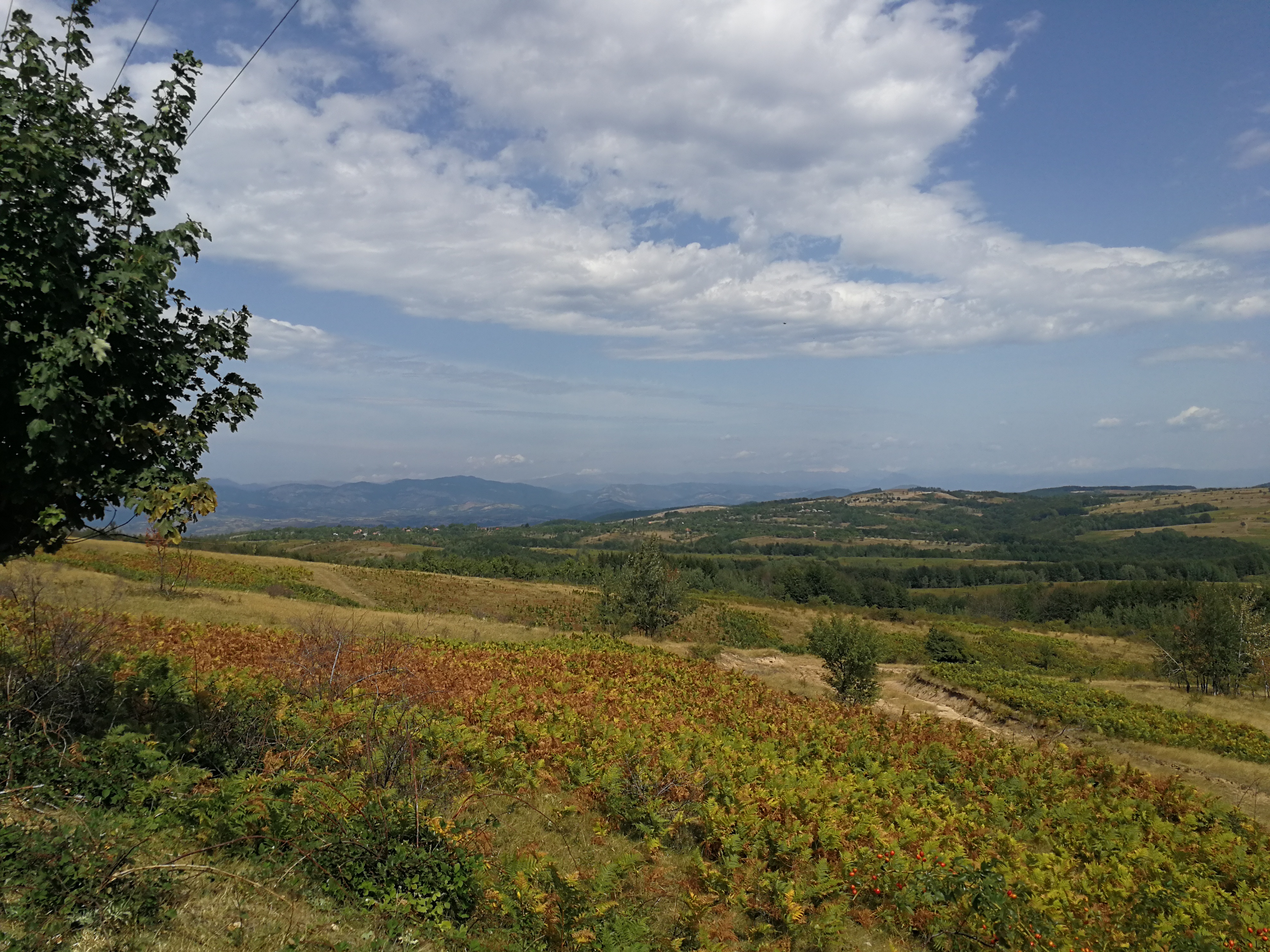
(Mehediniti Mountains in Romania)
The experts visited the location for the mobility information center that will be installed in the context of the project Transdanube.Pearls in the premises of the existing info center in Orsova.
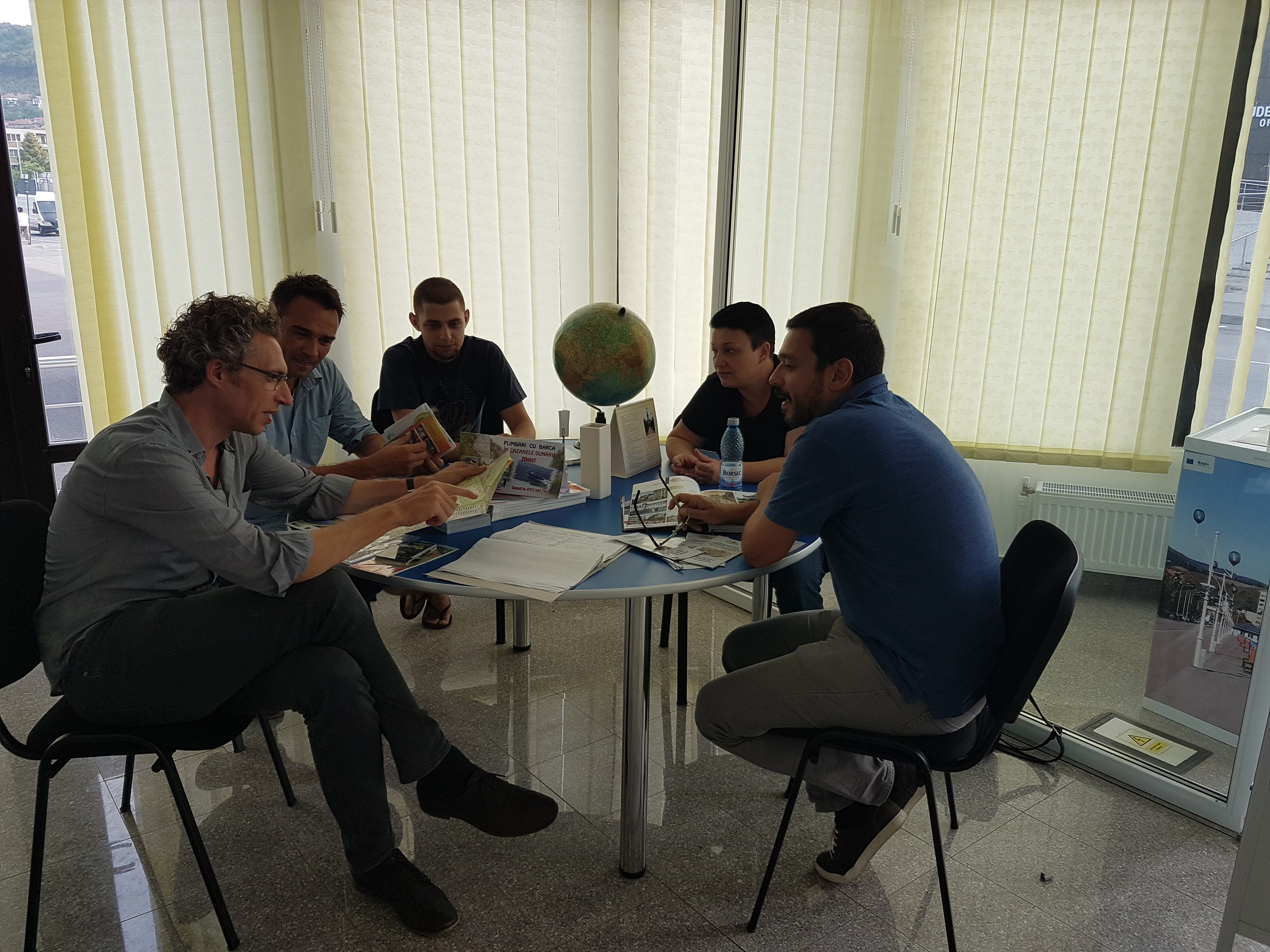
(Stakeholder meeting in the Info center in Orsova, Romania)
Travelling back to Serbia provided the possibility to cross the border between Serbia and Bulgaria and to visit the region of Vidin. Exploring Baba Vida castle on the shores of the Danube offered a great view on the river and the newly built bridge to Calafat.
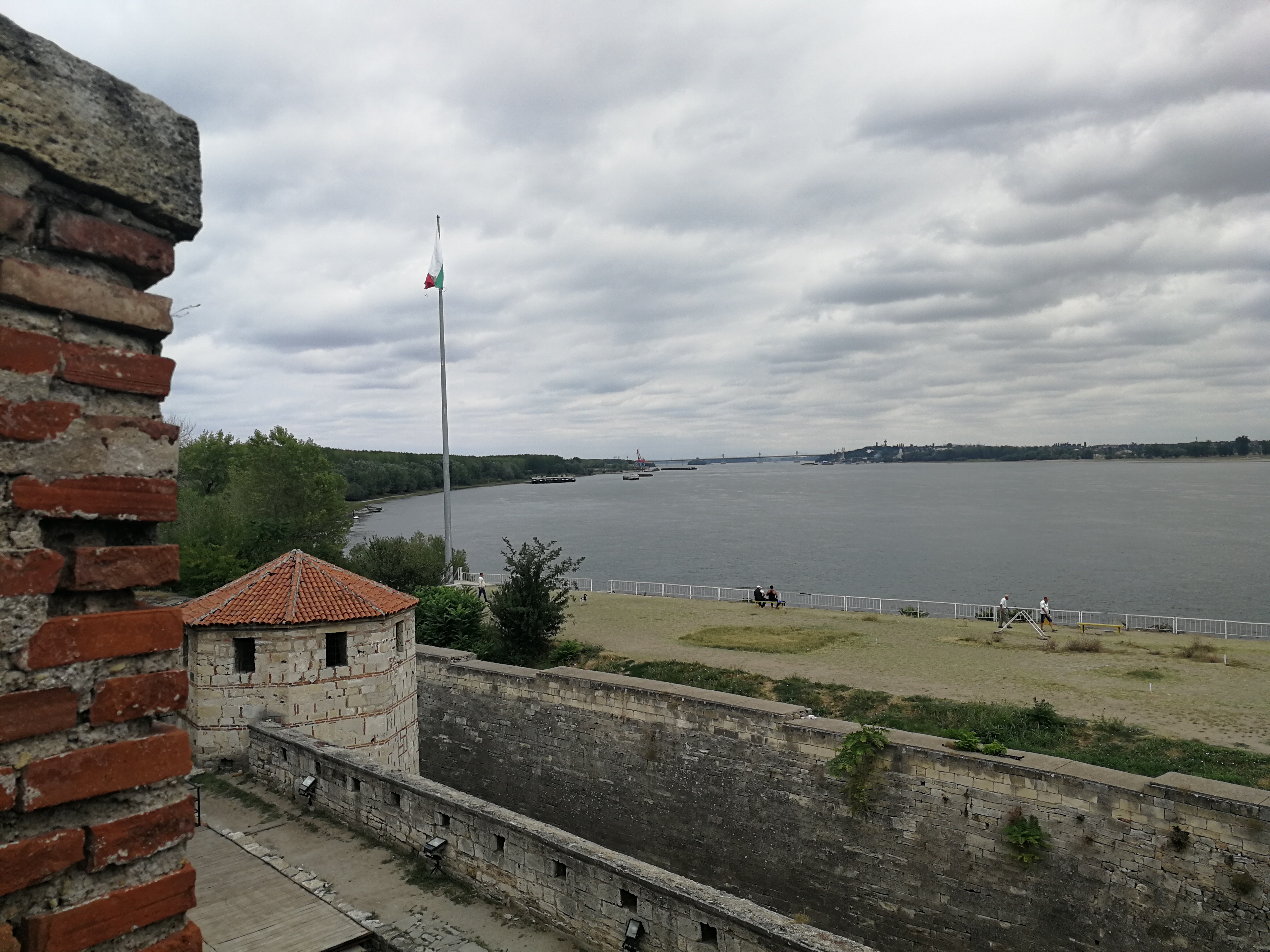
(Baba Vida castles in Vidin with view on the newly built bridge to Calafat, Romania)
While the experts met the members of the regional tourism council, the video team visited the impressive Belogradtschik rocks.

(Belogradtschik Rocks in Vidin, Bulgaria)
Before travelling to Ruse, the team made a stopover in the most southern point along the Danube, in Svishtov, where they explored the city by bike.
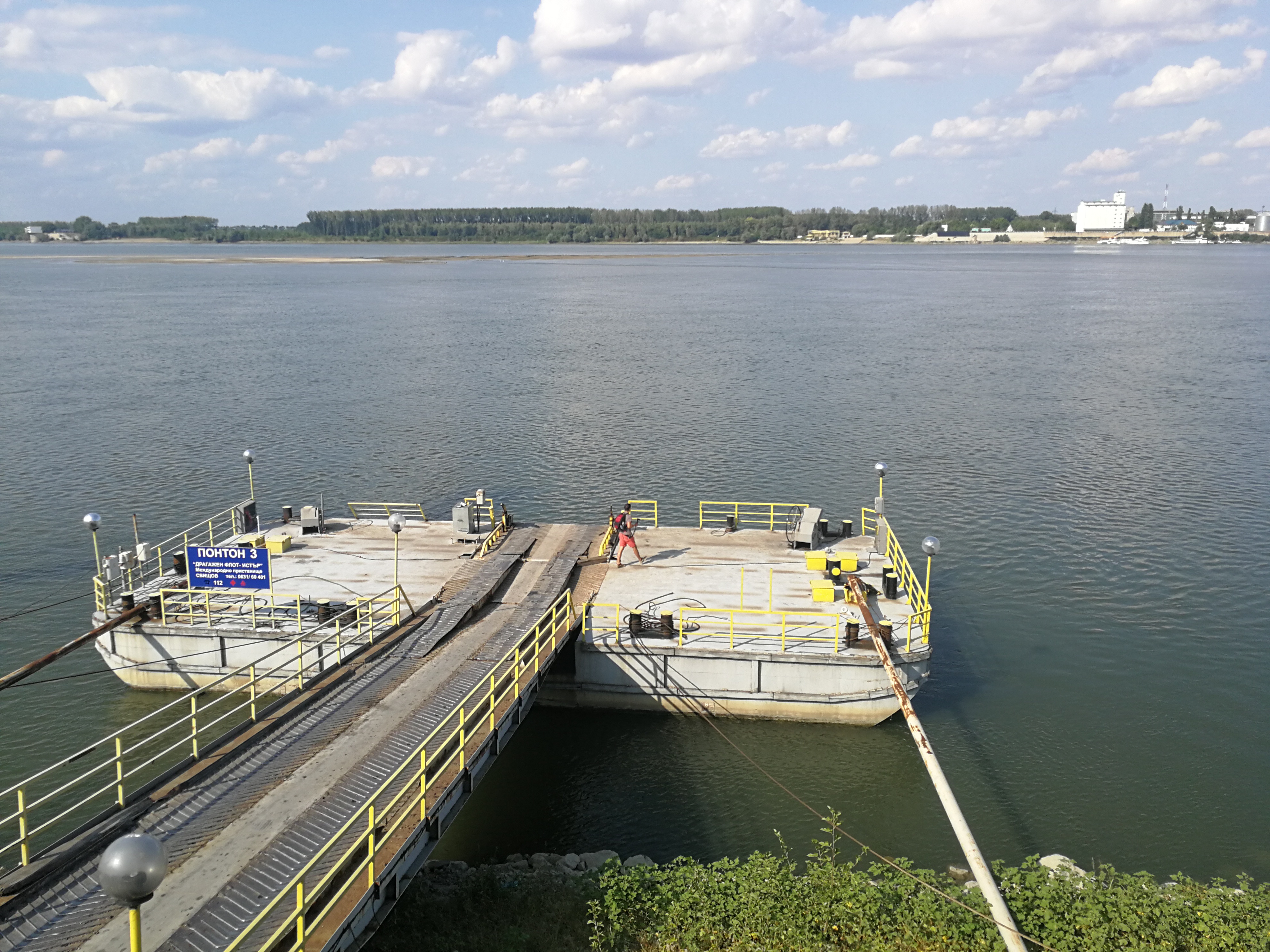
(At the shores in Svishtov, Bulgaria)
In Ruse, the experts met the deputy mayor, with whom they discussed the options for Ruse to become a Pearl and afterwards went on a tour to see the touristic attractions in the surrounding region, such as the National Park Rusenski Lom. Back in the city, they rented bikes from the bicyclist friendly hostel “La Maison” and tested the cycling infrastructure of the region.
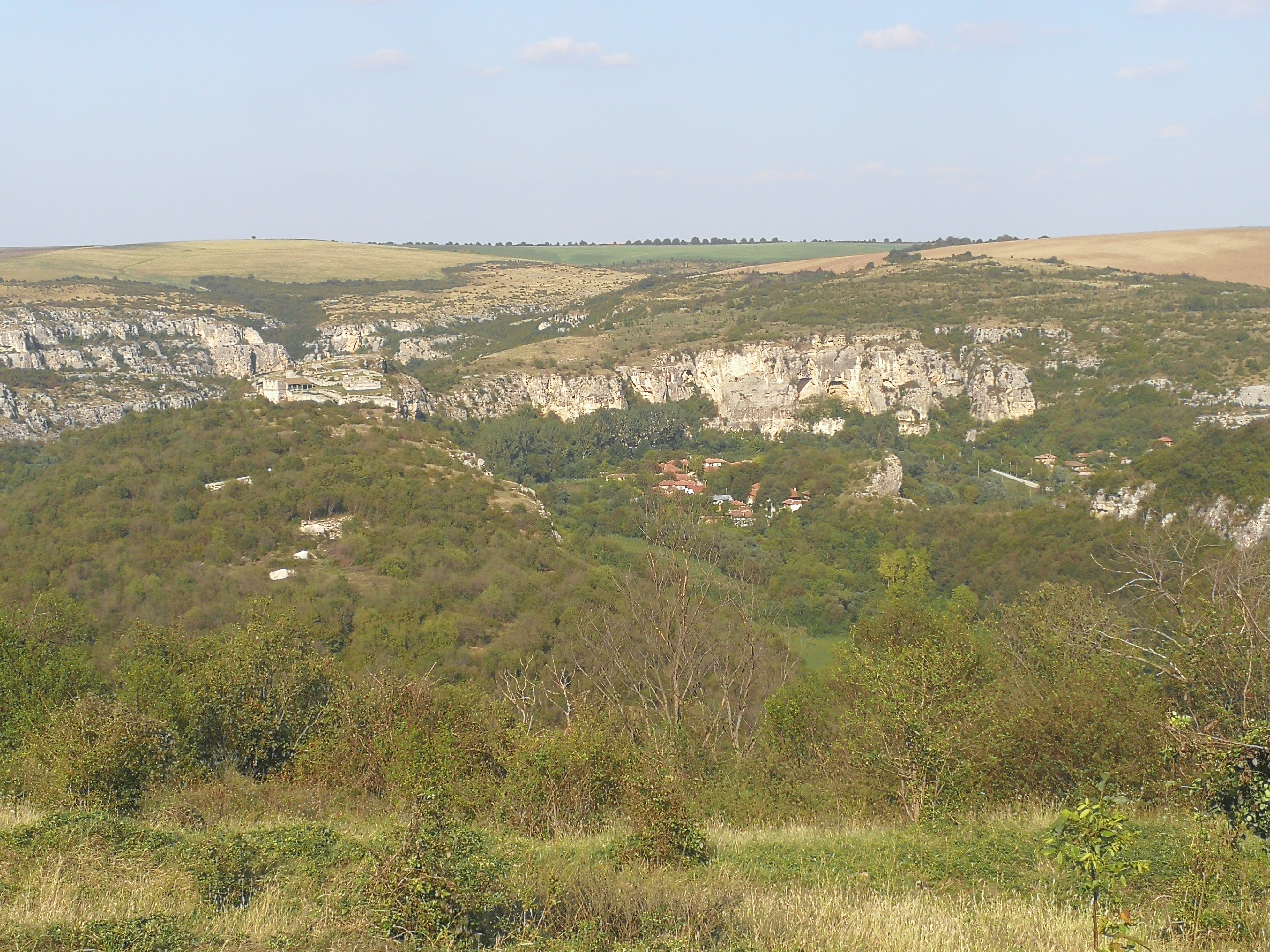
(National Park Rusenski Lom close to Ruse, Bulgaria)
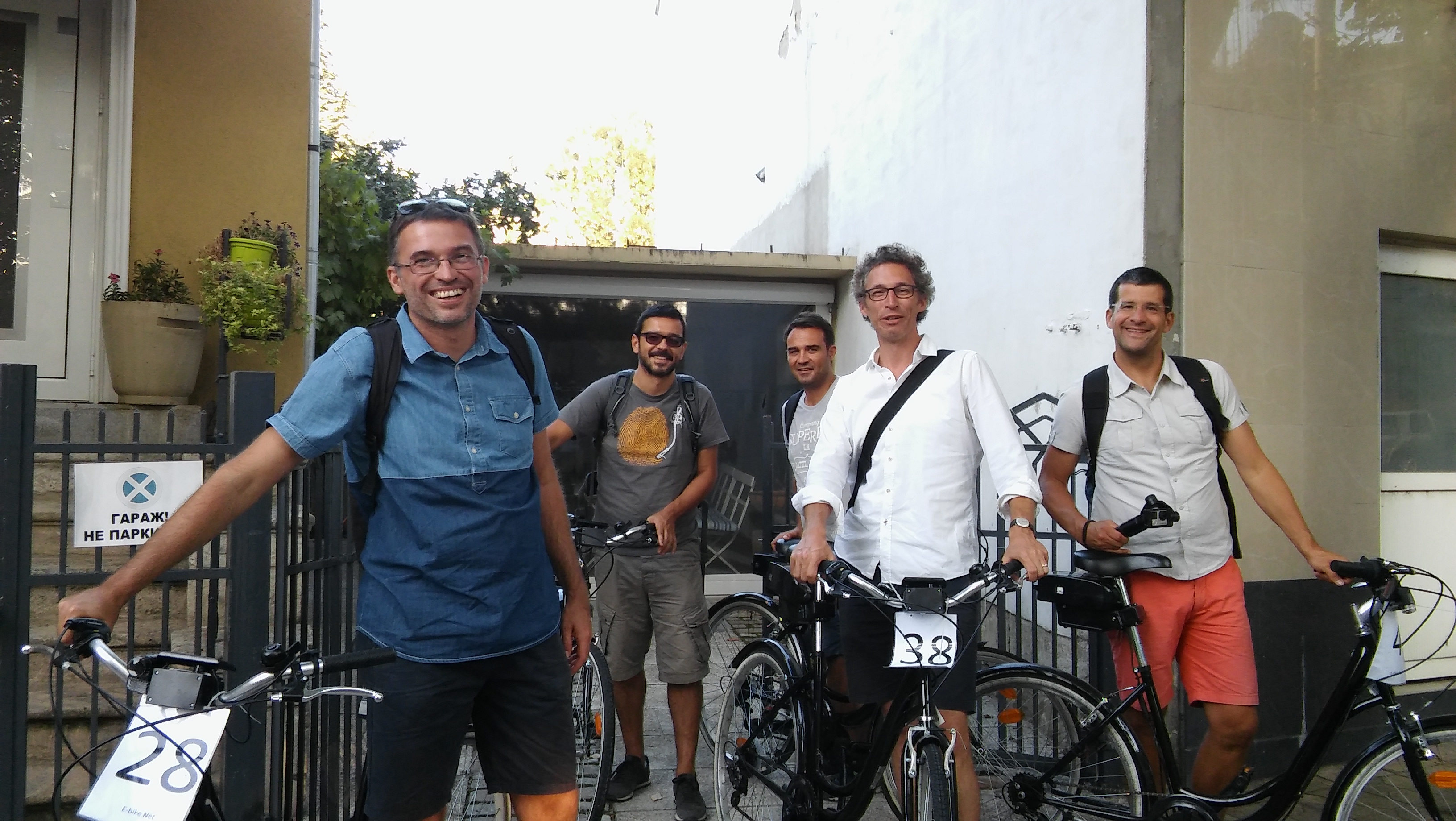
(Expert team tests the cycling infrastructure in Ruse, Bulgaria)
After passing Bucharest, the team slowly approached the Danube Delta and travelled to Tulcea, the main hub for trips to the Danube Delta. After meeting stakeholders in the city, the team had the chance to discover the RowmaniaFEST – The International Festival of Paddle Boats and to enjoy a row competition on the Danube.
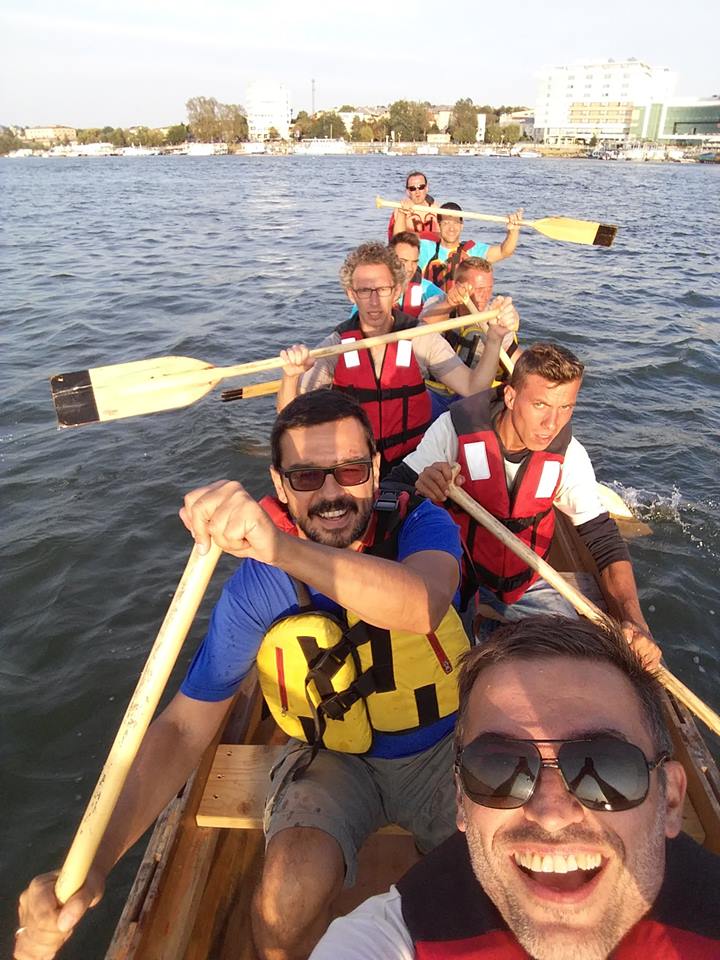
(Rowing competition on the Danube with Teodor Tulu in Tulcea, Romania)
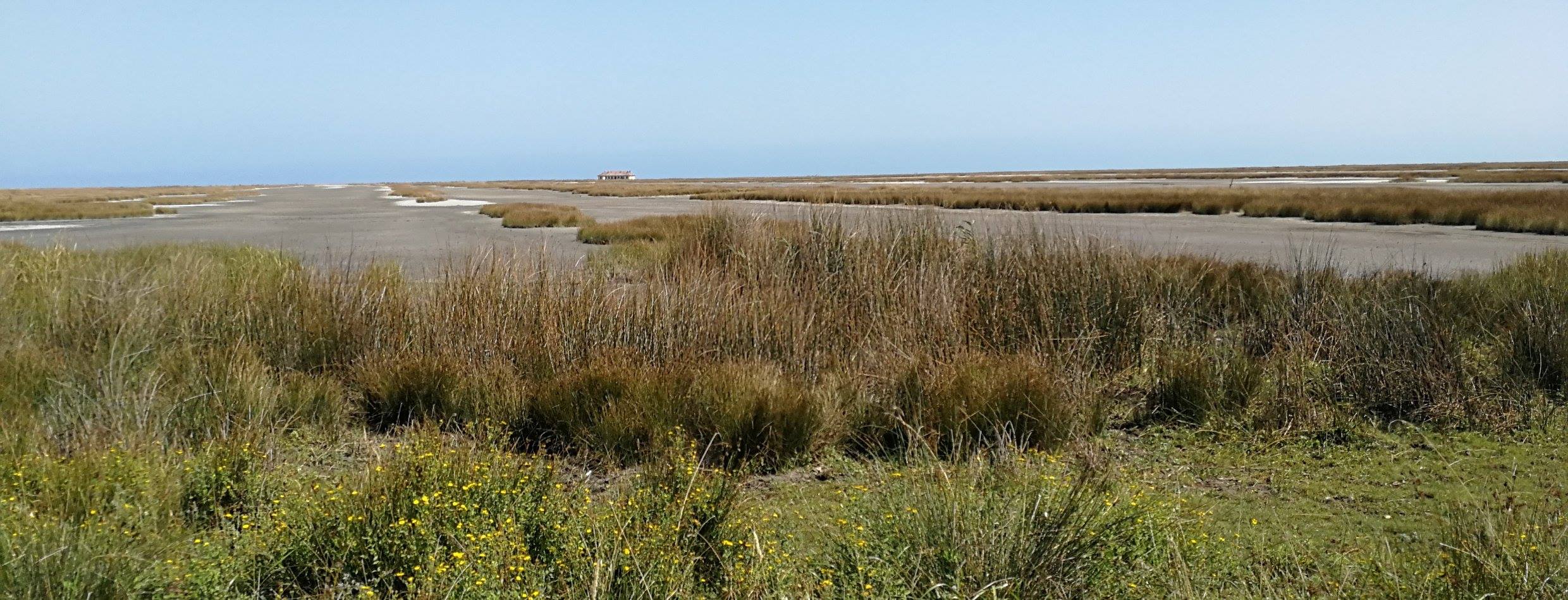
(View on the Danube in Danube Delta)

(Danube Delta)
FINALLY: The team reached the Black Sea, but in a different manner than most of the tourists. After going to Sulina by boat, they decided to rent bikes and to cycle a small, but adventurous path connecting Sulina with St. George. Although the team was haunted by flat tires on this route and they had to push the cycles in some sections, they finally found themselves at the point where the Danube is entering the Black Sea.
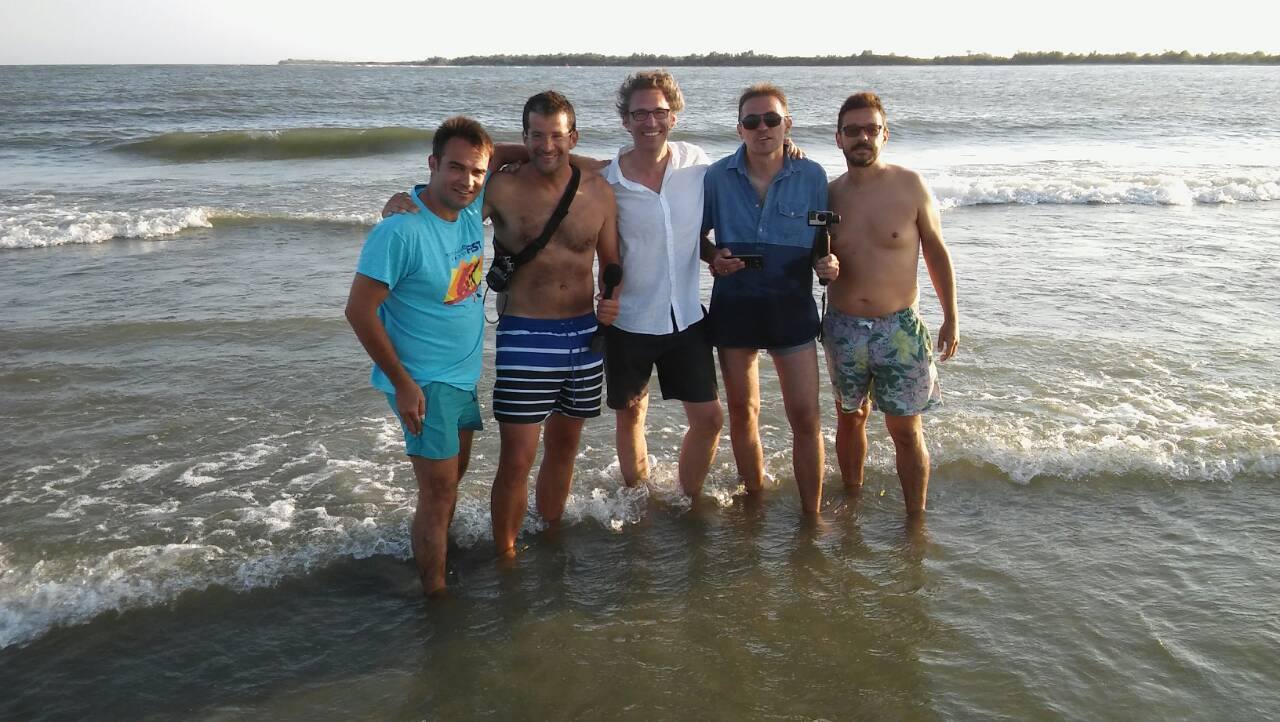
(The team of the Assessment Tour reaching the Black Sea - where the Danube enters the Black Sea)
